The province of Caylloma in Arequipa
It is one of the most important provinces of Arequipa. It is part of the 8 that make up the entire Arequipa region. The importance lies in the fact that it borders the regions of Cusco and Puno at the same time as one of these regions with the provinces of Arequipa (capital) and the province of Castilla. As can be seen, it is one of the regions that is closest to the Andes Mountains and for this reason its main attraction is the flight of condors.
All about the province of Caylloma
Explore Caylloma
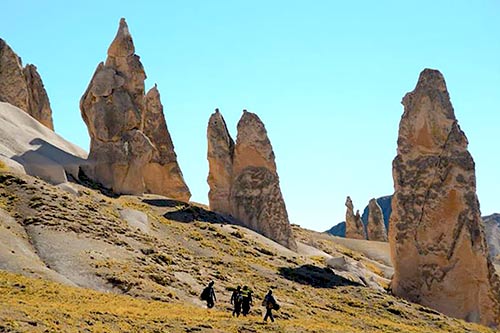
1 The Choqolaqa stone forest in Arequipa
Choqolaqa is known as the ancient Arequipa because it is believed that it was a city turned into stone by the disobedience of the inhabitants to their gods.
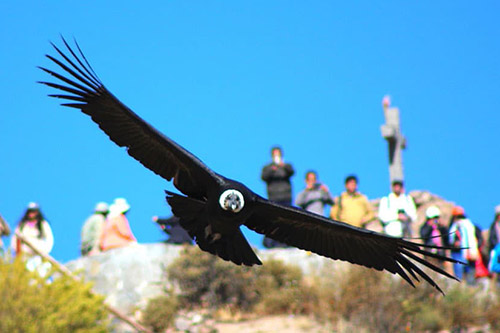
2 The Colca canyon
The Colca Canyon is the second most visited tourist attraction in Peru, after Machupicchu. He is in Arequipa. It is one of the deepest on the planet.
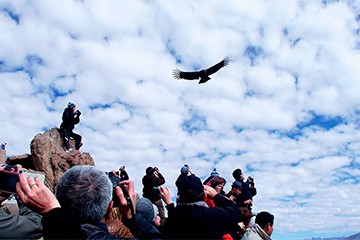
3 Viewpoint of the condor in Colca
The 'Cruz del Cóndor' viewpoint, the most famous in the Colca Canyon, allows you to see the flight of the Andean condor, one of the most visited spectacles in Peru.
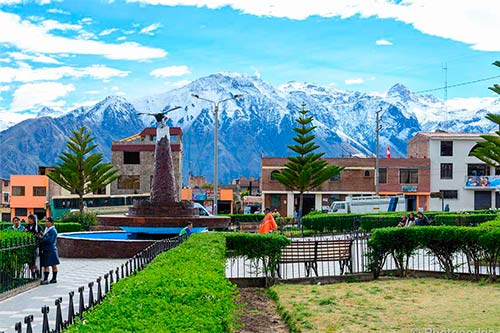
4 The town of Cabanaconde
Cabanaconde is the gateway to the Colca Canyon. It is famous for the viewpoint 'Cruz del cóndor'. It is 215 kilometers from the city of Arequipa.
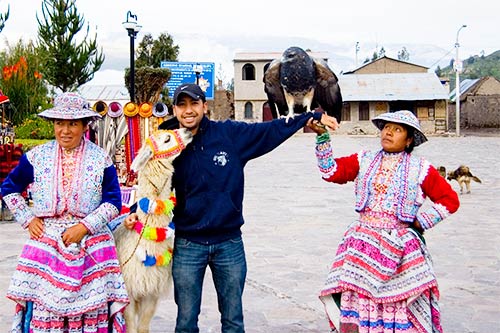
5 The town of Chivay
Chivay is the door to the Colca Canyon. It is famous for the dance of the wititis, the La Calera thermal baths, its colonial church and its beautiful landscapes.
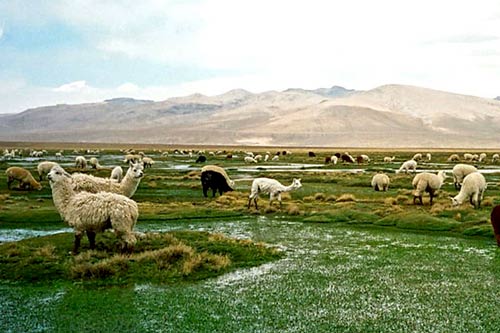
6 The salinas and aguada blanca national reserve
It is located in southern Peru, part of the departments of Arequipa and Moquegua. There are various mammals such as vicuñas and birds such as the Andean condor.
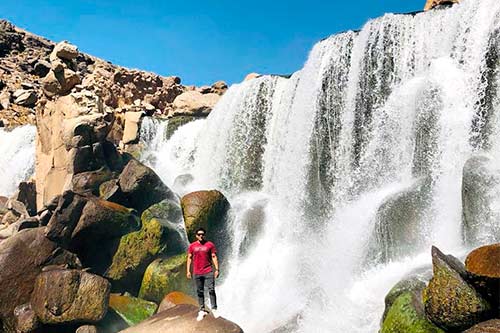
7 Pillones waterfall and Imata stone forest
Pillones is one of the most beautiful landscapes in Arequipa. Imata has natural figures product of erosion. Both sites are included in a single tour.
Caylloma important tourist center
Caylloma is a province made up of 20 districts, in which the presence of the districts of Chivay stands out as the capital of the province and which is important because it is the obligatory link for those who wish to ascend and see everything the Colca canyon; Majes is another important district since a large part of its territory is ideal for growing products such as rice and it is also possible to find delicious and always tasty river shrimp.
Within this province there are more than 86,000 inhabitants. Some of these inhabitants speak Quechua as their mother tongue and over time they learned Spanish. It is likely that they have a certain command of English and other languages, especially in tourist destinations due to the high demand that is generated. Caylloma has an area of 14,019.46 square kilometers.
In the territory of Caylloma you can find remains of human settlements and cave paintings. The name of Caylloma comes from 3 Quechua words. Remember that Quechua is an agglutinative language. In this way, it is understood that Caylloma comes from Cay, Ayllu and Huma”, in the Spanish language this word can be understood as “Cabeza de Ayllu” It probably alluded to an important center.
The province of Caylloma is one of the largest and most important because it houses a large number of tourist sites where different activities can be carried out, such as adventure tours or trips with the whole family that will give us afternoons and nights of joy. You can visit the Colca Canyon, the beautiful valleys that are formed by the presence of huge rivers that descend from the snow-capped mountains. These valleys are also integrated by the presence of several volcanoes and nature reserves.
Where is Caylloma?
Caylloma is very close to the long mountain ranges that are part of the Andes Mountains. That is why the geography it presents varies greatly throughout its territory. The areas that are closest to Cusco and Puno tend to have mountainous areas and thanks to these you can also find the impressive valleys arable for fruits, potatoes, onions, rice and others.
This province borders exactly on the East with Puno and on the North with Cusco, on the West with the Arequipa province of Castilla and on the South with Arequipa (province). That is, it is about 5 hours away by bus. Although the time to get from Arequipa to the Colca Canyon is only 4 hours and 30 minutes.
Another important district of Caylloma is that of Majes, which borders Camaná and therefore with the seaports, from where different exports and imports can be carried out for the benefit of the entire population. El Pedregal is an important commercial center that houses several centers of agricultural production.
How to get to Caylloma?
The capital of Caylloma borders exactly with Espinar (Cusco) and with Castilla. As we mentioned before, it is 5 hours from the capital of Arequipa and about 6 hours from the Historic Center of Cusco. The easiest ways to get there are by bus. Which have the following distance: Arequipa to the district of Caylloma are 227 kilometers. While from Cusco it is 304 kilometers. The highway that must be followed is the Panamericana that connects Cusco with Arequipa and Puno.
Brief history of Caylloma
As it is an ideal place for life due to the extensive valleys and the different basins of rivers and lagoons. Large populations lived in this place. The development of these groups of people was solvent and not very greedy, that is, they did not carry out expansionist campaigns, with the exception of one of these populations. The groups were the Collaguas, the Cabanas and the Tapay. This last group was probably the least interested in war conflicts and lived practically isolated.
The other two tribes developed in the Colca river basins. In this sense they occupied spaces of the current Callalli, Chivay, Yanque, Achoma, Sibayo, Maca and others that correspond to the current region of Cusco. Since then, in the area of the cabins that is located to the east of the Colca River, you can find the ideal corn crop for chicha de guiñapo. It is narrated that before the arrival of the Incas, these regions already had a correct functioning in the areas of agriculture, hunting and conservation of collected food.
During the Incas, it is said that the union of the Incas with these ethnic groups was peaceful and through the marriage of Mayta Cápac and Mama Yachi. At the entrance of the Inca domain, the distribution in ayllus was established and some constructions were carried out. These constructions would date from the years 1300 AD. approximately.
During the Spanish colony, there is the presence of Gonzalo Pizarro, in charge of taking the evangelizers to this region. The main ayllu or llaqta that inhabited this region at that time was that of the Collaguas. Caylloma was also considered an important point because gold and silver mines were found that were extracted by the natives of the place under subhuman conditions.
Tourist attractions in Caylloma that are mandatory places to visit
- Colca Canyon, this is one of the main tourist spots. From the mountain where you can see the depression in the earth that makes up the canyon, you can also see the flight of the condors.
- Stone Forest, It is a set of rock formations that resemble human figures and in some cases animals. It is located in the district of Huayllay.
- Limacota Lagoon, It has a unique beauty thanks to the presence of the snowy Mismi. From this place you can appreciate beautiful landscapes.
- Thermal baths, Throughout the region you can find different places that house thermal baths that little by little are improving their services.
Climate
Caylloma an altitude of 4,320 meters above sea level. This location is given because it is located in a mountainous area of the Andes Mountains. That is why you can do hiking trails and appreciate beautiful landscapes. These landscapes are mostly home to a large amount of flora and fauna that favorably became national reserves. The temperature in this province varies from 2°C to 16°C, with the lowest temperatures during the night until dawn. The rains are present during the months of November to February, the rest of the months it does not rain very often.
Discover more places about Caylloma
In Caylloma you can find many attractions, as mentioned above. It is also possible to visit different thermal baths due to the presence and volcanic region through which this entire province crosses. At the same time, as it is an agricultural valley, several generations of inhabitants lived throughout this region, generating important traditions such as the dance of the Wititi, which according to what they say has been maintained since the marriage of the Inca Maya Cápac.
Other options that can be carried out in this province is rural community tourism that focuses on the district of Sibayo. Where you are part of the community with the clothes and carrying out the activities that the inhabitants normally do, such as caring for animals, crops and long walks. Something that you cannot miss are the exquisite thermal baths and the exquisite Chupe de Camarones, which is one of the main dishes and with the greatest demand in Arequipa.
After your trip, the beautiful landscapes that you will see from the hills of the mountains or from the viewpoint of the flight of the condors will remain in your mind. If you plan to visit Caylloma get ready to dance and enjoy.